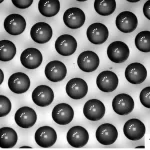A recent study led by the University of Texas Health Science Center at Houston McGovern Medical School has unveiled important insights into the management of placenta accreta, a potentially life-threatening condition in which the placenta attaches too deeply to the uterine wall. Traditionally, cesarean hysterectomy (CH) has been the go-to treatment for this condition, but there has been a lack of comprehensive data on alternative management strategies, especially for those wishing to retain their uterus and fertility.
The study, a cohort analysis, involved 60 individuals with suspected placenta accreta spectrum (PAS). These participants received in-depth counseling on their treatment options, leading to a variety of management approaches. Out of the group, 29 participants underwent cesarean hysterectomy, 16 opted for delayed interval hysterectomy (performed 4-6 weeks after delivery), and 15 chose a more conservative management route to preserve uterine function. The researchers aimed to assess the primary outcome of maternal morbidity, which was classified into acute (within 24 hours post-surgery) and delayed (24 hours or more post-surgery) categories. Secondary outcomes like blood loss, transfusion needs, readmission rates, and pathology findings were also evaluated.
Surprisingly, the study revealed no significant difference in maternal morbidity rates across the three treatment groups: 55% for cesarean hysterectomy, 56% for delayed interval hysterectomy, and 53% for conservative management. However, the individuals in the conservative management and delayed interval hysterectomy groups had notably lower rates of blood transfusion compared to the cesarean hysterectomy group. Furthermore, rates of delayed morbidity were similar among all three groups.
While the study does come with limitations—such as its single-site design, lack of randomization, issues with patient compliance, and concerns over cost-effectiveness—the findings still offer promising insights into alternative management strategies for placenta accreta. The study’s diverse participant pool and its short study timeline highlight the potential for uterine preservation and improved maternal safety in managing PAS.
These findings provide hope for individuals who may wish to maintain their fertility while still receiving adequate care for this complex condition.
Disclaimer: The study had certain limitations, including the absence of randomization and a single-site data collection, which should be considered when interpreting the results. Further research is needed to confirm these findings and assess the long-term safety and efficacy of alternative treatment strategies for placenta accreta.











